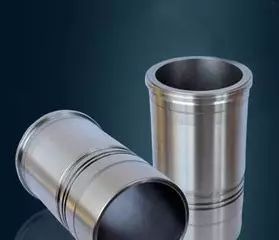The engine must be disassembled and overhauled during overhaul. Assembly after overhaul is an important task. How to smoothly install parts into a complete diesel engine has high technical requirements. In particular, the quality of the assembly directly affects the service life of the engine and the frequency of repairs. The following describes the assembly process of the main parts of the engine.
1. Installation of cylinder liner
When the engine is working, the inner surface of the cylinder liner is in direct contact with the high-temperature gas, and its temperature and pressure are changing frequently, and its instantaneous value is very high, which places a large thermal load and mechanical load on the cylinder. The piston makes high-speed reciprocating linear motion in the cylinder, and the inner wall of the cylinder acts as a guide.
The lubrication condition of the inner wall of the cylinder is poor, and it is difficult to form an oil film. It wears out quickly during use, especially in the area near the top dead center. In addition, the combustion products are also corrosive to the cylinder. Under such harsh working conditions, cylinder wear is unavoidable. Cylinder wear will affect the working performance of the engine, and the cylinder liner is also a vulnerable part of the diesel engine.
The installation points of the cylinder liner are as follows:
(1) Put the cylinder liner without a water blocking ring into the cylinder body for a test first, so that it can rotate flexibly without obvious shaking, and at the same time check whether the dimension of the cylinder liner step above the cylinder body plane is within the specified range .
(2) Regardless of whether the cylinder liner is new or old, all new water blocking rings must be used when installing the cylinder liner. The rubber of the water blocking ring should be soft and free of cracks, and the specification and size should meet the requirements of the original engine.
(3) When pressing into the cylinder liner, you can apply some soapy water around the water blocking ring to facilitate lubrication, and you can also apply some appropriately on the cylinder body, and then gently push the cylinder liner in according to the marked cylinder hole sequence number In the corresponding cylinder hole, use a special installation tool to slowly press the cylinder liner into the cylinder completely, so that the shoulder and the upper surface of the cylinder spigot are closely attached, and it is not allowed to use a hand hammer to smash it hard.
After installation, use the inner diameter dial indicator to measure, and the deformation (dimension reduction and loss of roundness) of the water blocking ring shall not exceed 0.02 mm. When the deformation is large,
The cylinder liner should be pulled out to repair the water blocking ring and then reinstalled. After the cylinder sleeve is installed, the upper shoulder of the cylinder sleeve should protrude from the plane of the cylinder body by 0.06-0.12 mm, and this dimension should be tested before installing the water blocking ring. If the protrusion is small, a copper sheet of appropriate thickness can be padded on the upper shoulder of the cylinder liner; when the protrusion is too large, the upper shoulder of the cylinder liner should be turned.

